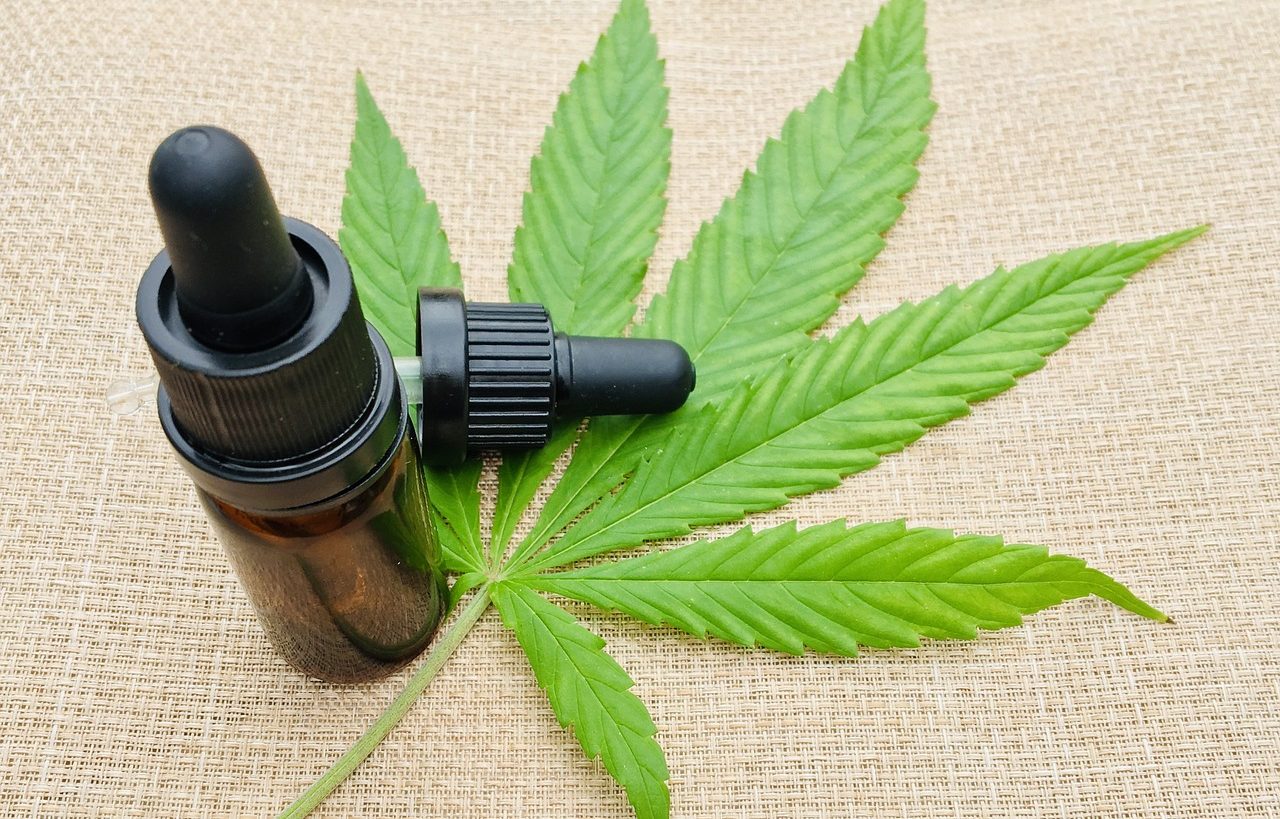BLOG
By: Carolina Vera Matiz
Cannabis: A Promising Future


In 1981, the Colombian writer and journalist Juan Gossain, published the book “WEED” which told the story of the cannabis bonanza of the 1970’s, preceding the terrible decades of the 80’s and 90’s a terrifying period which Colombia experienced due to the drug-trafficking trade.
A short while ago, this book was re-edited and in its prologue, the former health Minister Alejandro Gaviria states the following:
“From the standpoint of almost forty years of history with many subsequent chapters in the tragic history of drug-trafficking in Colombia now revealed, “WEED” can be read as a warning, a novel-chronicle highlighting the great socio-economic, cultural and political transformations brought about by drug-trafficking in the midst of a permissive society.
(…) This novel was the first to describe this transformation which would go on to define the recent history of Colombia. It was the first to show how drug-trafficking feeds, from the bottom upwards, the unbridled violence which only added to our historical violence and our inherited hatreds. “WEED”, tragically, is only a prelude, a taste of what was later to come, just more forcefully and with greater destructive power. The trafficking of cocaine.
A few years ago, Colombia legalized the export of cannabis derivatives for medicinal and scientific purposes. Dozens of companies have now set up in Colombia in search of business opportunities. The former smugglers have been replaced by a new generation of entrepreneurs, the “cannabis yuppies”. Now as then, big numbers are involved, billions of dollars in exported goods; but, with just one difference: today they are legal.
According to studies carried out by Fedesarrollo (Colombian Foundation for Higher Education and Development), the cannabis bonanza started in 1970; by 1977, Colombian drug-trafficking income was estimated at USD $500 million. A subsequent study conducted on the same entity in 1998, points out that, at that time, cannabis income had decreased to USD $35 million, whilst income from cocaine had shot up to USD $120 million. Finally, studies from 2011 show that by then, the traffickers’ annual income was USD $4,500 million.
In this context, the legalization of cannabis for medicinal and scientific purposes constitutes a relevant topic for both Colombian industry and the Colombian economy. This was approved in 2016 through a bill presented by Senator JUAN MANUEL GALAN. It is important to emphasize the following points explaining the whys and wherefores of this law:
With regard to the use of cannabis, it is important to note that of the literature consulted, there do not seem to be any harmful consequences attributable to this plant as intense as those experienced with alcohol, cocaine, opium and their derivatives, morphine or heroin.
The clinical and pre-clinical studies presented show advances in the research on the therapeutic effects of cannabis and pose the need for continued research to enable us to discover any side-effects, the risks which might appear with early consumption, the way to prevent them and which will, in any case, allow us to find the best way to regulate use of this substance in order to relieve and manage pain in patients with a wide variety of illnesses.
Currently, cannabis is a substance which is subject to special restriction within the framework of the standard narcotics‘ convention of 1961, approved by the United Nations Assembly. In literal b) of paragraph 5 article 2 of the agreement, it states: the parties will forbid the production, export and import, trading, possession or use of any such narcotics, if in their judgment and with the conditions prevailing in the country concerned, it is the most suitable method of protecting both public health and well-being, except in the quantities necessary exclusively for medical and scientific research, including clinical experiments with the said narcotics carried out under the surveillance and supervision of the party concerned, or they are subject to direct surveillance and supervision.
Within the framework of this regulation, some countries in this hemisphere manifest a tendency towards de-criminalization of the consumption of psychoactive substances, particularly cannabis for therapeutic use. In this sense, countries worldwide have not only begun debating the use of medicinal cannabis, but also have allowed through legislation to start research in order to try out its therapeutic use.
Before analyzing the effects of the legalization of cannabis for medical use, it is important to clarify what cannabis is, what are its medicinal uses and in which presentations it comes.
Cannabis is a herbaceous plant originally from Persia, made up of alkaloids, oils, acids and resins. Its two main active components are: TETRAHIDROCANNABINOL (THC) and CANNABIDIOL (CBD).
THC is considered the most psychoactive component of cannabis. Essentially, THC increases the level of dopamine in the brain since it is a neurotransmitter which acts upon the centers of reward and pleasure.
On the other hand, CBD has been studied in a wide range of medicinal effects, which take place when cannabidiol interacts with the receptors of the human body and brain. For instance, when CBD unites with TRPV-1, it activates the capacity to regulate pain, inflammation and body temperature.
Amongst the medicinal benefits attributed to cannabis and borne out by scientific studies and publications are the following:
- Nervous system: acts as a sedative and anti-depressant.
- Eye-care: reduces inner-eye pressure.
- Oncology: relieves pain and reduces nausea in chemotherapy, stimulates appetite and improves mood in cancer patients.
- In addition, in recent decades, there has been proof that cannabinoids have certain beneficial effects beyond mere palliative care. Effects already shown include a reduction in tumor-size, fewer growths of new cancerous cells and metastasis’ prevention.
- Depression, anxiety, psychosis, alzheimer’s: studies show that cannabis consumption improves or lifts mood, which in itself reduces depression. In alzheimer cases, it reduces confusion and has also been used to treat certain forms of psychosis and bipolar disorder.
- Alcohol, opium and sleep-related addictions: it is believed that cannabidiol modulates several neural circuits involved in drug and medicine addiction. Data shows that in states where medicinal cannabis is legal, the mortality rate due to opioids begins to fall quite measurably almost immediately.
- Diabetes: in 2013, one of the biggest studies carried out on humans showed that cannabis consumption was linked to lower insulin levels.
- Treatment of pain: this is one of the main uses of cannabis; studies show that the endocannabinoid system regulates the processing of pain signals both with central and peripheral activity.
Ways of administering cannabis are as follows:
- Inhalation: smoked or in the form of vapor; it enters the blood flow directly from the lungs.
- Ingestion: consumed orally, absorption is slow; effect takes place in one to two hours.
- Orally without ingesting: extracts and tablets which dissolve in the mouth.
- Skin application: applied to the skin for local relief, often in the form of balm or ointment.
- Application through the skin: patch or gel conceived to be absorbed transdermically.
In conformance with the law and its reglamentations, natural citizens and/or legal persons either national or foreign, interested in exploiting cannabis, must obtain a license:
| TYPE | MODALITY | ENTITY |
| Production of cannabis derivatives |
|
Ministry of Health and Social Protection |
| Growing of psychoactive cannabis |
|
Ministry of Justice and Law |
| Growing of non-psychoactive cannabis |
|
Ministry of Justice and Law |
| Seed |
|
Ministry of Justice and Law |
From the date of reglamentation of the law until October 2020, the Ministry of Justice has granted 4,225 licenses.
For their part, the Ministry of Health and Social Security has issued 465 licenses, both for national use and export.
As regards Intellectual Property, the new products made up or developed from cannabis derivatives may be protected through patents or industrial designs.
Regarding patentability, the requirements are the same as for any invention: novelty, inventive step and, in this case, industrial application for medicinal purposes.
Patents relative to cannabis extract, oil-based cannabis, methods of preparing cannabis compositions, nanoparticles of micro-encapsulated or powdered cannabis are currently under administrative procedure. In total, from the cannabis legalization law being approved, numerous patent applications have been presented – of which 17 are still active – on behalf of foreign companies, mainly American and Canadian entities.
As regards industrial designs, it is possible to protect new ornamental creations provided that no technical advantage is added to the product. In this category, such elements as pipes, vapors, packaging and so on can be protected.
Finally, with regard to distinctive signs, their main method of protection is through trademarks. The registering of signs must comply with the general requisites and it is viable to include the term CANNABIS within the trademark make-up.
As a matter of fact, there are currently registered trademarks which include both the term CANNABIS and its distinctive logo. The following are some examples:
As regards trademarks, the distribution between Colombian and foreign owners is broken down into similar percentages.
Although the list of countries in which cannabis has been legalized has increased over the last decade, Colombia’s geographical location, climatic and light conditions and the lack of seasons enable cannabis to be sown the whole year round providing excellent quality of product. Under these conditions, and given the possibility of growing for both local use and export, Colombia has become a highly attractive country to invest in the cannabis industry and cannabis is a product which will be more and more sought after worldwide, thanks to its already proven benefits.
BIBLIOGRAPHY
- LA MALA HIERBA (WEED). Juan Gossain, 1981.
- PRÓLOGO. Alejandro Gaviria, 2019, Editorial SEIX BARRAL.
- Estudio FEDESARROLLO, 50 Años de Influencia Política Pública, 1970 a 2020.
- Ley 1787 de 2016.
- EL CANNABIS MEDICINAL, Guía para el paciente, Leonard Leinow y Juliana Birnbaum, 2017, Editorial SIRIO S.A.
- CANNABIS TERAPEÚTICO, Laura Torres y Jaume Roselló, Editorial Reedbook Ediciones.
- Sitio web: www.minjusticia.gov.co
- Sitio web: www.minsalud.gov.co
- Sitio web: www.sic.gov.co
Más artículos
-
An interview: inspirations, experiences, and ideas for equality by Natalia Vera for Trademark Lawyer Magazine
(Español) By Natalia Vera Matiz: As you may know, in January of 2021 was announced that Google and the French publishers achieved a new agreement…
Sunday July 7th, 2024 -
What does intellectual property have to do with food security?
(Español) Por Natalia Vera Matiz: Hace un par de años, cuando el presidente Biden iniciaba su mandato en Estados Unidos, los autores de un blog escribía con mucha vehemencia sobre la necesidad…
Monday April 24th, 2023 -
¿Is Facebook indeed excuting an antitrust conduct?
(Español) Por Natalia Vera Matiz: Hace un par de años, cuando el presidente Biden iniciaba su mandato en Estados Unidos, los autores de un blog escribía con mucha vehemencia sobre la necesidad…
Tuesday February 21st, 2023 -
An interview: inspirations, experiences, and ideas for equality by Natalia Vera for Trademark Lawyer Magazine
(Español) Por Natalia Vera Matiz: En su reciente Asamblea extraordinaria de noviembre de 2021, la OMS convino “poner en marcha un proceso…
Wednesday January 18th, 2023

 Español
Español